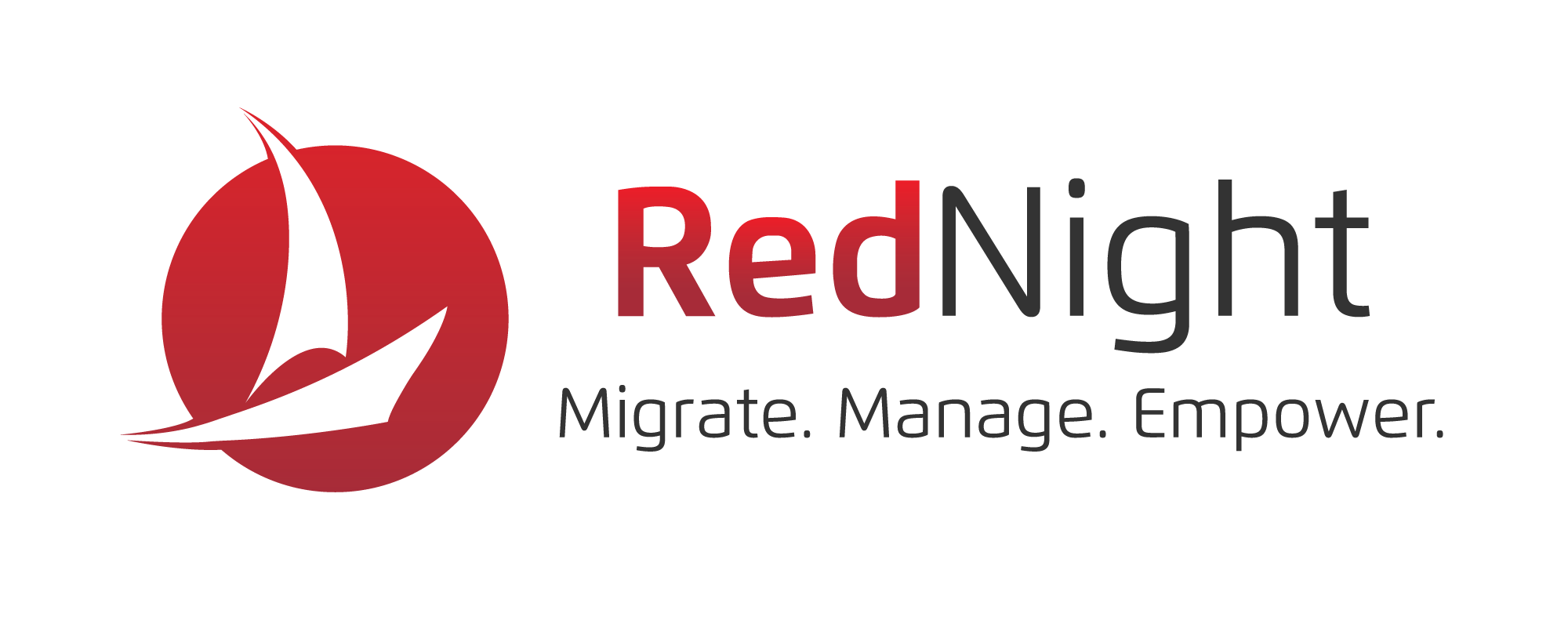Maintaining multiple computers within your IT environment can be a hassle.
How much time, effort, and dollars have you wasted on reinstalling software multiple times? Reconfiguring program settings? What about when you leave for the day and suddenly think of an important point you could include in that report you’ve been working on, but you don’t have access to your office workstation from home?
Virtual desktops address and solve all of these issues.
First, you can access a virtual desktop from anywhere as long as you have a web-enabled device and an internet connection. That means your midnight inspiration no longer has to wait until the next day. Second, you never have to worry about upgrading and maintaining your applications anymore – that’ll be taken care of for you, automatically. And third, having a virtual desktop eliminates the need to buy high-priced workstations, opening the door to simpler devices like thin clients for accessing applications.
Interested in learning more about virtual desktops? RedNight Consulting is here to tell you all about it.
Opening the Door with Virtualization
What exactly is virtualization, and why has it taken the industry by storm?
Virtualization is when a virtual version of something physical is created that shares the resources of the original host device. “Something” refers to anything ranging from an operating system to a server.
Let’s look at a server to illustrate exactly what we mean.
Virtualization allows you to divide a physical server into several virtual ones. These virtual servers now work independently from each other, yet they are still part of the same system and operate off of that single, physical server.
So where do these virtual machines live?
Well, they can be implemented on your on-premise server, or they can be created off-premise in a secure data center for a private cloud experience.

Virtualization also brings many benefits to organizations. Primarily, the division of one physical server into multiple virtual ones maximizes the use of unused server resources. This means that the primary server is no longer limited to using only 5-15% of its resources for singular tasks.
It goes without saying that this is highly inefficient. By virtualizing existing assets, it removes the need to invest in additional servers and the racks pace footprint need to house, power and cool them.
Flexible and Virtual
A virtualized server can also expand opportunities available to a business. It can run multiple virtual desktops in tandem from a single device, as they with each have their own virtual OS, processor core, allocated memory, applications and scalable storage.
And, because these virtual desktops are delivered via the network connection, the user is not bound to the physical office to use them. If the virtualized server is a hosted on-premise, company owned solution, users need only to to have a virtual private network (VPN) setup for their at home device to access their virtual desktop.
In the event that the virtualized server is off-premise and the virtual desktops are being delivered as a service, users need to simply log on via the internet from any web-enabled device.
In short, virtualization is one of the most effective ways to reduce IT expenses and boost efficiency, agility, productivity, scalability, and success for businesses everywhere.
Deploying Virtual Desktops for Your Team
One of the fastest growing virtualization solutions for business are virtual desktops. Though previously an on-premise solution, virtual desktops are now finding success as standalone offerings from cloud vendors.
Virtual desktops can benefit a business by reducing expenditures, increasing mobility and flexibility, and giving you more time to focus on more important matters through automated maintenance. With their speed of configuration and deployment, the transition is seamless and smooth with little disruption to the business.
To give you a clear image of how virtual desktops work, let’s look at an example of a virtual workspace:
Amazon WorkSpaces (AWS), is a fully managed, desktop as a service (DaaS) solution. This service runs on the AWS Cloud, which means that you get all of the benefits of cloud computing such as automatic maintenance and unlimited scalability.
By subscribing to this service, you’ll upload your data to a central location. You’ll be able to access your desktop (including your documents, applications, and resources) through the internet from any location. That also applies to an unlimited number of devices including, Windows and Mac systems, Chromebooks, iPads, Fire tablets, Android tablets, smartphones, and thin clients via your web browser.
In addition to mobility and convenience, virtual desktops provide a simple to use, scalable, secure, and affordable solution that can be customized to every employee’s specific needs. As mentioned previously, automatic updates, upgrades and patches are an integrated part of DaaS. They remove the responsibility of daily update management. This allows you to keep your IT partner focused on more complex issues. In turn, that allows them to respond quicker to your changing needs and opportunities.
A Better Cost Saving Idea
There are many, many advantages that virtual desktops bring – one of which is arguably one of the biggest deciding factors when switching over: cost benefits.
Check out a few of them below.
Reduce CAPEX Costs
When your desktops are virtual, you no longer have to spend money on large capital expenditures like powerful PCs, workstations and laptops. Switching over to operational expenses (OPEX) and working out of the cloud has been estimated to decrease the need for physical hardware by 56%, saving businesses a massive amount of money.
Traditionally, the buying and downloading of software would apply to one computer at a time. This means that if you wanted to have the same program on multiple computers, you would have to buy licenses for each device. With virtual desktops, instead of purchasing software for each device, you simply log into your virtual desktop account to access only the applications that you need.
Forget about owning a multitude of programs that you only partially use. Virtual desktops allow you to reduce software bloat and pay only for what you need on a monthly basis.
Save on Resource and IT Maintenance Spending
In the traditional desktop setting, software upgrades and security patching can be costly if not regularly applied. With RedNight as your DaaS provider, we’ll maintain your applications and services so that you don’t have to. Through your DaaS you’ll also have the most up-to-date versions of the OS and applications you require.
This continual maintenance can reduce the need for on-site IT resource deployment or dedicated in-house desktop technical support. You lower your outsourced IT costs, remove downtime disruptions, and lessen your internal need for payrolled IT staff.
Greatly Reduce Costly Downtime
The productivity that businesses lose due to IT downtime can become costly the longer it takes to resume business activities.

Predictable Spending
DaaS lets you predict exactly what you’re going to be spending every month on services. With predictability, businesses can better plan their budgets for future growth needs. They can avoid those unexpected costs that count against their bottom lines.
Better Scalability, Mobility and Security
Not only are virtual desktops cost-effective, but they provide incredible benefits around scalability, mobility and security.
Scalability
As mentioned previously, you can deploy virtual desktops quickly.
Instead of taking days to receive a new desktop and the software that comes with it, virtual desktop deployments take only minutes.
Every configuration setting is already preloaded onto the VDI package. They’re ready whenever you need another virtual desktop. For example, with Amazon WorkSpaces, you can pick and choose which applications you want to install.
This helps you customize your desktop to how your company uniquely works. If your company changes and evolves, your VDI solution can keep up with you seamlessly.
With unlimited scalability, you never have to wonder if your virtual desktop can keep up and adapt to your operations.
Mobility
One of the biggest perks of a virtual desktop is how you can access it from anywhere. Work from home, the coffee shop down the street, or even your in-laws house (so you can avoid interactions).
Studies have actually shown that flexibility in the work environment leads to happiness and increased productivity; in a Vodafone study, 86% of US respondents said that a flexible working environment led to an improvement in employee productivity.
AWS Cloud-deployed desktops automatically save your work as you make changes. This means that you are always accessing the latest version of your tasks and projects, regardless of your location.
You might think of a great idea to add to your presentation while you’re watching your smart TV at home. VDI allows you to easily open your TV’s web browser, log into your virtual desktop, and add that idea to your presentation before you forget it.
This mobility can also help with your customer service.
Let’s say you have a desktop chat application tied to your website for potential clients. VDI makes your desktop mobile, which gives your employees the ability to talk to them from anywhere, anytime. In turn, it further strengthens client bonds through communication and retention.
With one of the top 2 reasons for customer loss being taking too long to answer, this would be a great ability for any business to have.
Security
Recent research has found that the total volume of data loss at the enterprise level has risen to more than 400%. IT Web also predicts that the total cost of data breaches will be more than $2.1 trillion by 2019, with small and medium-sized businesses as the primary targets.
These statistics clearly demonstrate the increasing threat toward business data. In this regard, it’s important that companies extend their backup and disaster recovery plans to include their cloud data.

Having a virtual desktop and cloud storage provides a higher level of security that will help you avoid data loss. However, it’s not a guarantee since the majority of data loss stems from human error. DaaS providers provide you with a BDR option to get your virtual desktops up and running after any disaster.
With your data is backed up in an off-site data center and not on endpoint devices that can easily be destroyed or stolen, your data will always be safe and ready to access when it’s needed, never letting your productivity suffer. DaaS providers do follow a strict set of security protocols to protect your data when you deploy your virtual desktops on potentially unsecured devices.
Even in a virtual environment, your security and data remain a top priority.
Take the Virtual Step with RedNight
Virtual desktops are the next step in the journey towards building your most efficient and productive business. With their cost-effectiveness, endless scalability, advanced security, flexibility, and overall convenience, it’s no wonder why high percentages of businesses have adopted this solution.
Ready to make the transition? Get in touch today and let’s get started!


